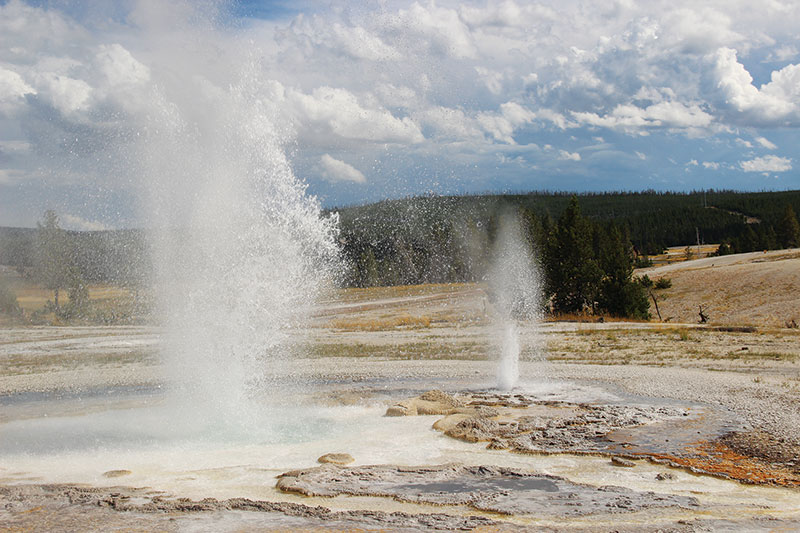Your Favorite Science Spots
Spring
2018
Member Profiles
Your Favorite Science Spots
We asked Sigma Pi Sigma members to tell us about the places that have been especially memorable to them through their scientific careers. Below is a small sample of the exciting places our members have visited in the name of science.
1. Giza Plateau, Cairo, Egypt
According to famed Egyptologist W. M. Flinders Petrie, the perimeter of the Great Pyramid is 3023.22 feet and the height is 480.69 feet. This gives a perimeter-to-height ratio of 6.28 or 2 Pi, making this pyramid a representation of a hemisphere on the ground. This is a fantastic construction and mathematics feat, especially when you consider the date of construction.
– Steven Frasher, 1969, US Naval Academy

2. European Space Agency
My first time visiting the European Space Operations Centre (ESOC) was in October 2017, during the launch of the latest Copernicus satellite, Sentinel-5p. ESOC coordinates satellite control, monitoring, and data retrieval for the European Space Agency. I helped cover the launch on the official ESOC social media channels, and met several members of the Mission Control team!
– Lisa McDonald, 2016, Coe College

3. Lick Observatory, Mt. Hamilton, California
Lick Observatory was the first permanently occupied mountain– top observatory. In those days [the scientists] lived on the mountain; we lived and breathed astronomy. I not only learned about the science, I also learned about the integrity and collegiality of the field.
– Sethanne Howard, 1986, Georgia State Univerity

4. Yellowstone National Park, Wyoming
This place has the highest concentration of geysers in the entire world and shifted my research interests from astrophysics to geophysics.
– Mara Reed, 2017, University of Wisconsin-Eau Claire

5. My kids’ eyes, Arizona
My favorite science spot is my kids’ eyes! The magic and awe they behold in the world is a constant reminder for me to pause and think, to enjoy and relish the beauty in the micro level – that which they don’t see – yet!
– Benita Riesgraf, 2001, Lewis and Clark College

6. Green Bank Observatory, West Virginia
Visiting the tranquil observatory immediately summons up romantic visions of what once was: a mecca where young and old radio astronomers could gather and shed the distractions of daily life to study, learn, and live together.
– David Buch, 2017, West Virginia University

7. Virginia State College, Virginia
While studying physics at Virginia State College, Dr. John M. Hunter built cubicles in the basement of Colson Hall. Each physics major was assigned one of these cubicles; this was our own personal space to perform the experiments that were assigned as independent research.
– James H. Stith, 1971, Virginia State University

8. The Braun-Ruddick Seismograph Station, New York
What look like simple tabletop devices are a series of seismometers that can detect vibrations from an earthquake halfway around the world. Since the station is automated, measurements are taken continuously, always ready for the next big earthquake.
– Michael Wood, 1994, The Catholic University of America

